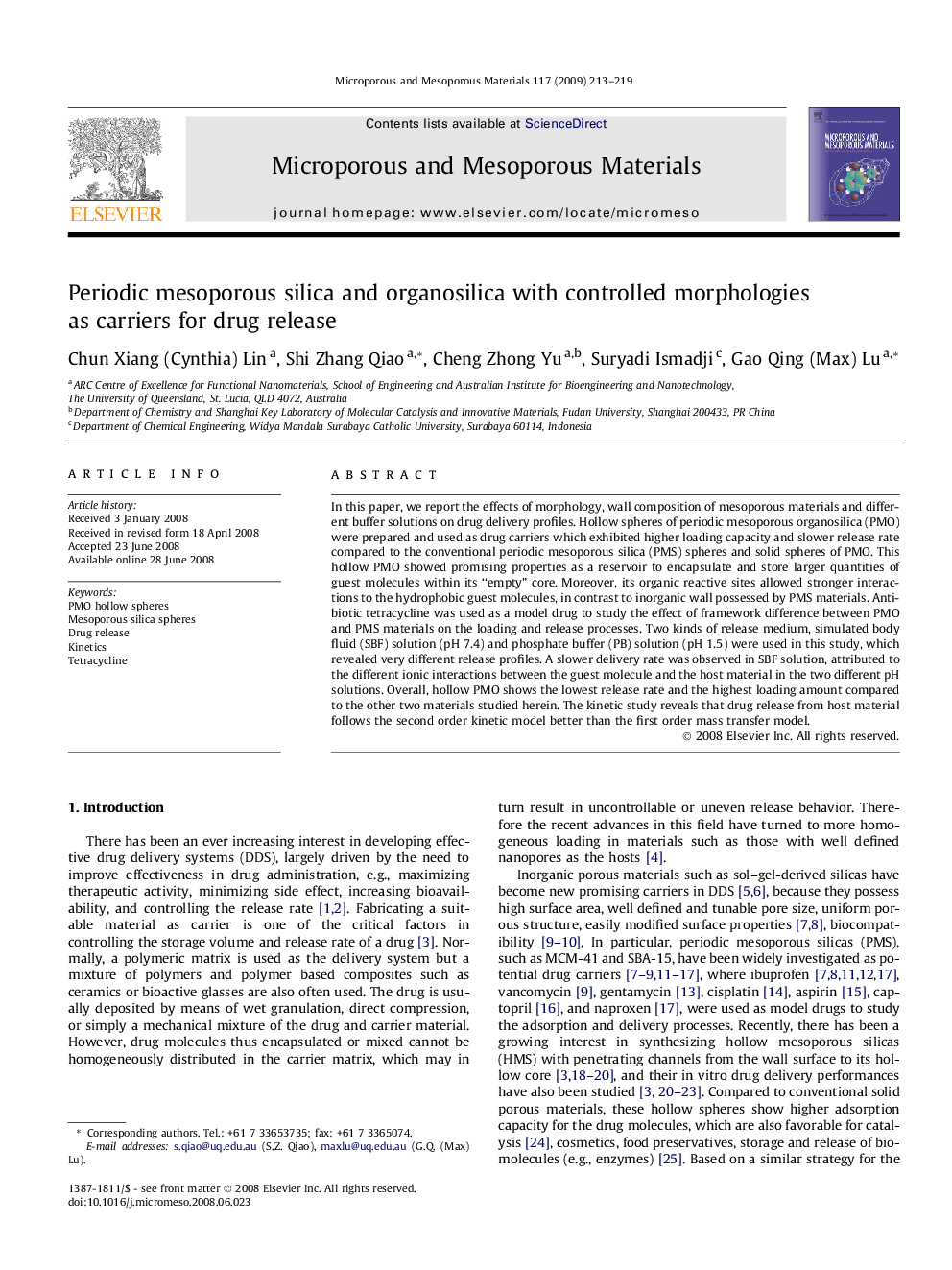| Article ID | Journal | Published Year | Pages | File Type |
|---|---|---|---|---|
| 75329 | Microporous and Mesoporous Materials | 2009 | 7 Pages |
In this paper, we report the effects of morphology, wall composition of mesoporous materials and different buffer solutions on drug delivery profiles. Hollow spheres of periodic mesoporous organosilica (PMO) were prepared and used as drug carriers which exhibited higher loading capacity and slower release rate compared to the conventional periodic mesoporous silica (PMS) spheres and solid spheres of PMO. This hollow PMO showed promising properties as a reservoir to encapsulate and store larger quantities of guest molecules within its “empty” core. Moreover, its organic reactive sites allowed stronger interactions to the hydrophobic guest molecules, in contrast to inorganic wall possessed by PMS materials. Antibiotic tetracycline was used as a model drug to study the effect of framework difference between PMO and PMS materials on the loading and release processes. Two kinds of release medium, simulated body fluid (SBF) solution (pH 7.4) and phosphate buffer (PB) solution (pH 1.5) were used in this study, which revealed very different release profiles. A slower delivery rate was observed in SBF solution, attributed to the different ionic interactions between the guest molecule and the host material in the two different pH solutions. Overall, hollow PMO shows the lowest release rate and the highest loading amount compared to the other two materials studied herein. The kinetic study reveals that drug release from host material follows the second order kinetic model better than the first order mass transfer model.
